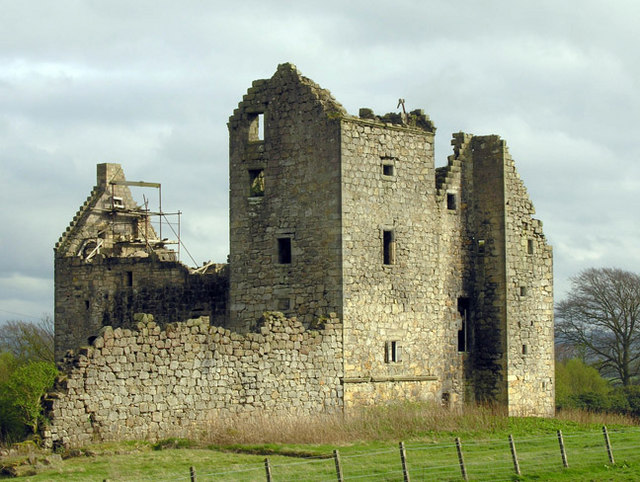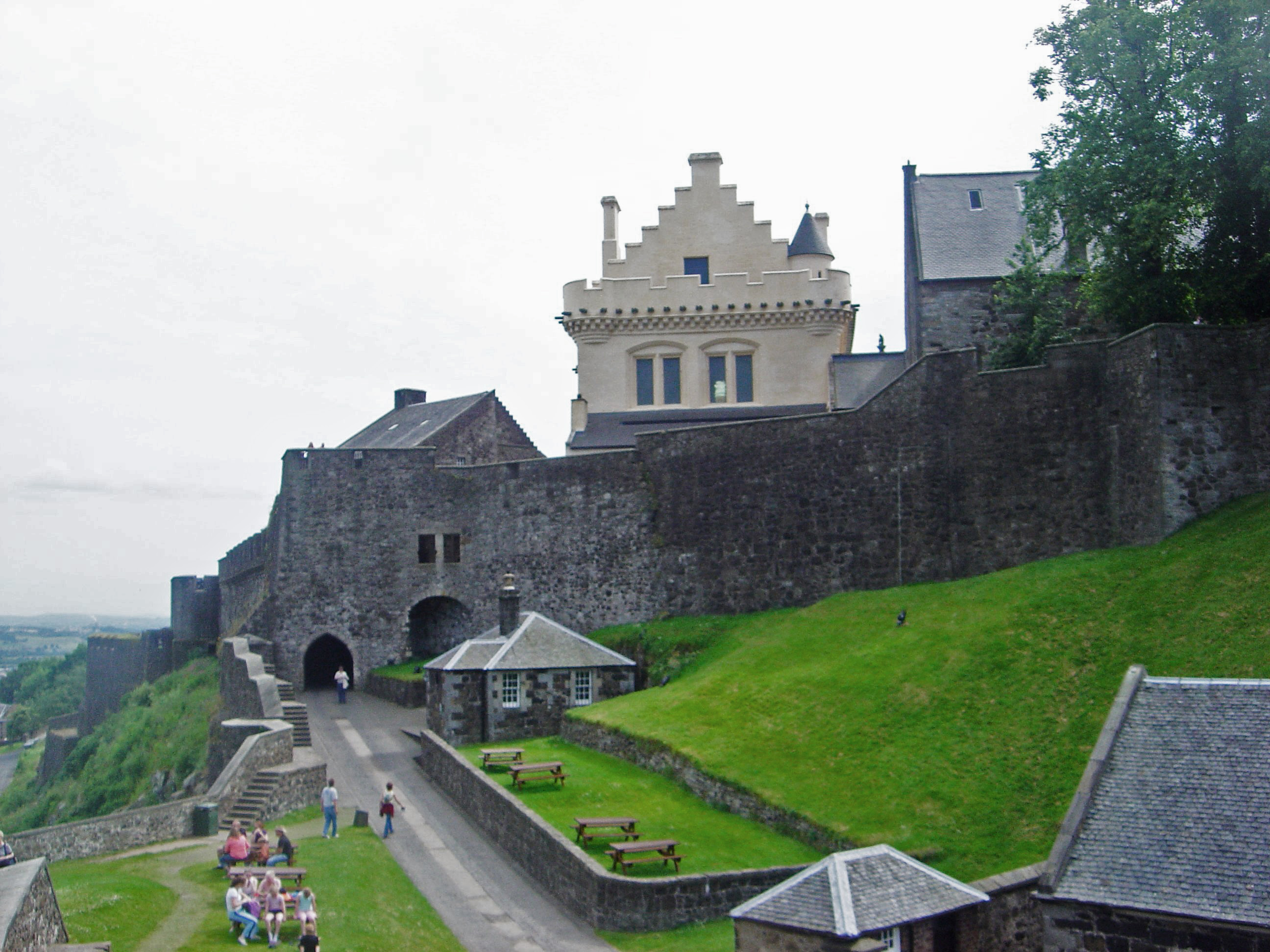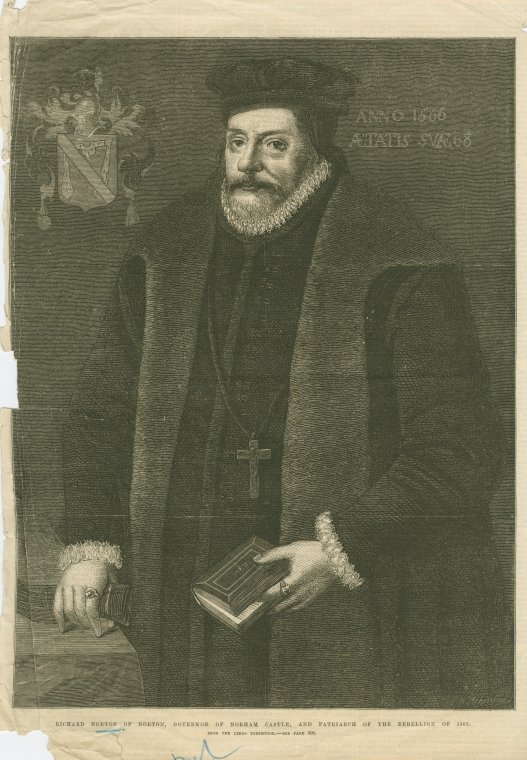|
Duncan Forestar
Duncan Forestar of Torwood and Skipinch was a Scottish courtier and financial administrator. He also served as Provost of Stirling. His family home was Torwood Castle near Stirling. "Skipinch" was an alternative name for Skipness Castle. James IV of Scotland gave him a barony of the lands of Skipness and the keepership of the castle on 3 July 1495. Duncan Forestar was also called "of Garden", from another property near Stirling. Alexander Forrester of Garden was a member of a later generation of the same family. He was Comptroller of Scotland from 1492 to 1499 and from 1508 to 1509, serving James IV of Scotland James IV (17 March 1473 – 9 September 1513) was King of Scotland from 11 June 1488 until his death at the Battle of Flodden in 1513. He inherited the throne at the age of fifteen on the death of his father, James III, at the Battle of Sauc .... The Comptroller was in charge of collecting and spending royal revenue. In 1508 he was "Great Purveyor to the Queen" or " ... [...More Info...] [...Related Items...] OR: [Wikipedia] [Google] [Baidu] |
Torwood Castle
Torwood Castle is a ruined 16th-century L-plan castle near the village of Torwood, in the Falkirk Council area of central Scotland. It was designated as a Category A listed building in 1979. The Buildings at Risk Register for Scotland originally listed its level of risk as low, but raised that level to moderate in mid-2019 after seeing signs of continued neglect. History The estate was held originally by the Foresters of Garden, who were the foresters responsible for the nearby Royal Forest of Tor Wood from the second half of the 15th century until the mid-17th century. Based on the date found on a carved stone panel found not far from the castle in 1918, the castle has been estimated as being built around 1566 for Sir Alexander Forrester. It passed to Clan Baillie in the early 16th century and then to George, 1st Lord Forrester in 1635. The castle was captured prefatory to taking Stirling Castle during the 1585 successful rebellion of the Earls of Mar and Angus. The castle was ... [...More Info...] [...Related Items...] OR: [Wikipedia] [Google] [Baidu] |
Skipness Castle
Skipness Castle stands on the east side of the Kintyre peninsula in Scotland, near the village of Skipness. Together with the nearby Kilbrannan Chapel it is a scheduled ancient monument. History The main structure of the castle was built in the early 13th century by the Clan MacSween, with later fortifications and other additions made to the castle through the 13th, 14th and 16th centuries. The castle was garrisoned with royal troops in 1494, during King James IV of Scotland's suppression of the Isles. James IV appointed Duncan Forestar as keeper of the castle. Archibald Campbell, 2nd Earl of Argyll, granted Skipness to his younger son, Archibald Campbell, in 1511. During the Wars of the Three Kingdoms in 1646, the castle was besieged by forces under the command of Alasdair Mac Colla Alasdair Mac Colla Chiotaich MacDhòmhnaill (c. 1610 – 13 November 1647), also known by the English variant of his name Sir Alexander MacDonald, was a military officer best known for his ... [...More Info...] [...Related Items...] OR: [Wikipedia] [Google] [Baidu] |
James IV Of Scotland
James IV (17 March 1473 – 9 September 1513) was King of Scotland from 11 June 1488 until his death at the Battle of Flodden in 1513. He inherited the throne at the age of fifteen on the death of his father, James III, at the Battle of Sauchieburn, following a rebellion in which the younger James was the figurehead of the rebels. James IV is generally regarded as the most successful of the Stewart monarchs. He was responsible for a major expansion of the Scottish royal navy, which included the founding of two royal dockyards and the acquisition or construction of 38 ships, including the '' Michael'', the largest warship of its time.T. Christopher Smout, ''Scotland and the Sea'' (Edinburgh: Rowman and Littlefield, 1992), , p. 45. James was a patron of the arts and took an active interest in the law, literature and science, even personally experimenting in dentistry and bloodletting. With his patronage the printing press came to Scotland, and the Royal College of Surgeons ... [...More Info...] [...Related Items...] OR: [Wikipedia] [Google] [Baidu] |
Alexander Forrester Of Garden
Alexander Forrester of Garden (fl. 1550-1599) was a Scottish landowner. He was the son of David Forrester of Torwood and Garden and Elizabeth Sandilands, daughter of James Sandilands of Slamannan. The name may be spelled "Forester" or "Forster". They were keepers of the royal Torwood Forest. In 1541 the Laird of Torwoodhead built a stable for the mares of James V of Scotland in the royal forest. Their home was Torwood Castle, where a datestone of "1566" suggests that Alexander Forrester built the remaining structure. "Garden" is near Arnprior, several miles to the west of Torwood. Robert Beaton of Creich and "Alexander Forster, laird of Torwood" were both in Paris in October 1560 and carried letters from the English ambassador Nicholas Throckmorton to William Cecil in London. Alexander Forrester was Provost of Stirling in 1562 and 1565 and had a house in Stirling. On 21 March 1567 he witnessed and signed an inventory of guns and artillery equipment at Edinburgh Castle. The oc ... [...More Info...] [...Related Items...] OR: [Wikipedia] [Google] [Baidu] |
Comptroller Of Scotland
The Comptroller of Scotland was a post in the pre-Union government of Scotland. The Treasurer and Comptroller had originated in 1425 when the Chamberlain's financial functions were transferred to them. From 1466 the Comptroller had sole responsibility for financing the royal household to which certain revenues (the property) were appropriated, with the Treasurer being responsible for the remaining revenue (the casualty) and other expenditure. By the 1530s the exchequer usually met in Edinburgh to audit and produce the accounts. Rooms were hired in the Blackfriars for the sessions. County sheriffs and other officials brought their reckonings to the exchequer. The accounts of the comptrollers were mostly in written in Latin, and were published as the ''Exchequer Rolls of Scotland''. James VI attended the Exchequer in person in Edinburgh on 13 February 1595, which pleased courtiers who wished to see him manage his estate. According to Roger Aston, he criticised inefficient excheque ... [...More Info...] [...Related Items...] OR: [Wikipedia] [Google] [Baidu] |
Margaret Tudor
Margaret Tudor (28 November 1489 – 18 October 1541) was Queen of Scotland from 1503 until 1513 by marriage to King James IV. She then served as regent of Scotland during her son's minority, and successfully fought to extend her regency. Margaret was the eldest daughter and second child of King Henry VII of England and Elizabeth of York, and the elder sister of King Henry VIII of England. Margaret married James IV at the age of 13, in accordance with the Treaty of Perpetual Peace between England and Scotland. Together, they had six children, though only one of them reached adulthood. Margaret's marriage to James IV linked the royal houses of England and Scotland, which a century later resulted in the Union of the Crowns. Following the death of James IV at the Battle of Flodden in 1513, Margaret, as queen dowager, was appointed as regent for their son, King James V. A pro-French party took shape among the nobility, urging that she should be replaced by John, Duke of Alba ... [...More Info...] [...Related Items...] OR: [Wikipedia] [Google] [Baidu] |
National Records Of Scotland
, type = Non-ministerial government department , logo = National Records of Scotland logo.svg , logo_width = , picture = , picture_width = , picture_caption = , formed = , preceding1 = National Archives of Scotland , preceding2 = General Register Office for Scotland , jurisdiction = Scotland , headquarters = HM General Register House, 2 Princes Street, Edinburgh EH1 3YY , employees = 430 , budget = , minister1_name = Angus Robertson , minister1_pfo = Cabinet Secretary for the Constitution, External Affairs and Culture , chief1_name = Paul Lowe , chief1_position = Keeper of the Records / Registrar General , website = National Records of Scotland ( gd, Clàran Nàiseanta na h-Alba) is a non-ministerial department of the Scottish Government. It is responsible for civil registration, the census in Scotland, demography and statistics, family history, as well as the national archives and historical records. National Records of Scotland was formed from the merger of the ... [...More Info...] [...Related Items...] OR: [Wikipedia] [Google] [Baidu] |
Pedro De Ayala
Don Pedro de Ayala also Pedro López Ayala (died 31 January 1513) was a 16th-century Spanish diplomat employed by Ferdinand II of Aragon and Isabella I of Castile at the courts of James IV of Scotland and Henry VII of England. His mission to Scotland was concerned with the King's marriage and the international crisis caused by the pretender Perkin Warbeck. In his later career he supported Catherine of Aragon in England but was involved in a decade of rivalry with the resident Spanish ambassador in London. Ayala was a Papal prothonotary, Archdeacon of London, and Bishop of the Canary Islands. Sources in English reveal little of Ayala's background, however he was from the noble family of the Counts of Fuensalida in Toledo. He was the son of Pedro Lopez de Ayala, Commendator of Mora and Treze, and Doña Leonor de Ayala. His contemporary, the historian Polydore Vergil, who may have known him in England, remarks that he was clever, but no scholar. Mission to Portugal In November ... [...More Info...] [...Related Items...] OR: [Wikipedia] [Google] [Baidu] |
Perkin Warbeck
Perkin Warbeck ( 1474 – 23 November 1499) was a pretender to the English throne claiming to be Richard of Shrewsbury, Duke of York, who was the second son of Edward IV and one of the so-called " Princes in the Tower". Richard, were he alive, would have been the rightful claimant to the throne, assuming that his elder brother Edward V was dead and that he was legitimate—a point that had been previously contested by his uncle, King Richard III. Due to the uncertainty as to whether Richard had died (either of some natural cause or having been murdered in the Tower of London) or whether he had somehow survived, Warbeck's claim gained some support. Followers may have truly believed Warbeck was Richard or may have supported him simply because of their desire to overthrow the reigning king, Henry VII, and reclaim the throne. Given the lack of knowledge regarding Richard's fate, and having received support outside England, Warbeck emerged as a significant threat to the newly ... [...More Info...] [...Related Items...] OR: [Wikipedia] [Google] [Baidu] |
Norham Castle
Norham Castle (sometimes Nornam) is a castle in Northumberland, England, overlooking the River Tweed, on the border between England and Scotland. It is a Grade I listed building and a Scheduled Ancient Monument. The castle saw much action during the wars between England and Scotland. Early history The castle was founded when Ranulf Flambard, Bishop of Durham from 1099 to 1128, gave orders for its construction in 1121, in order to protect the property of the bishopric in north Northumberland, from incursions by the Scots. In 1136 David I of Scotland invaded Northumberland and captured the castle. It was soon handed back to the bishopric, but was captured again in 1138 during another invasion. This time, the structure of the castle was substantially damaged. It remained derelict until Hugh de Puiset, Bishop of Durham from 1153 to 1195, had the castle rebuilt. The work was probably directed by Richard of Wolviston, who was the bishop's architect. In 1174 Hugh de Puiset support ... [...More Info...] [...Related Items...] OR: [Wikipedia] [Google] [Baidu] |
Heaton Castle
Heaton Castle (anciently Heton) in the parish of Cornhill-on-Tweed, Northumberland, England, is a ruined historic castle near the Scottish border. It is situated in an elevated position above the south bank of the River Till, 4 miles north-east of Coldstream and 9 miles south-west of Berwick-upon-Tweed, and 2 miles south-east of the River Tweed, the historic border with Scotland.. The castle was slighted in 1496 by King James IV of Scotland, but remnants survive as parts of the walls of outbuildings of a farm now known as Castle Heaton. History The castle was the seat of the de Heton family, which as was usual took its name from its seat. It passed in about 1250 to a branch of the prominent de Grey family, who in 1415 rebuilt it as a quadrangular castle. James IV of Scotland set miners to work to slight or demolish Heaton Castle on 24 September 1496, and gave his stone masons, led by John Cochrane, a bonus to work through the night. James IV brought the pretender Perkin Warbeck w ... [...More Info...] [...Related Items...] OR: [Wikipedia] [Google] [Baidu] |
Comptrollers Of Scotland
A comptroller (pronounced either the same as ''controller'' or as ) is a management-level position responsible for supervising the quality of accountancy, accounting and financial reporting of an organization. A financial comptroller is a senior-level executive who acts as the head of accounting, and oversees the preparation of financial reports, such as balance sheets and income statements. In most Commonwealth of Nations, Commonwealth countries, the auditor general, comptroller general, auditor general, or comptroller and auditor general is the external auditor of the budget execution of the government and of government-owned corporation, government-owned companies. Typically, the independent institution headed by the comptroller general is a member of the International Organization of Supreme Audit Institutions. In American government, the comptroller is effectively the chief financial officer of a public body. In business management, the comptroller is closer to a chief audit ... [...More Info...] [...Related Items...] OR: [Wikipedia] [Google] [Baidu] |





.jpg)



